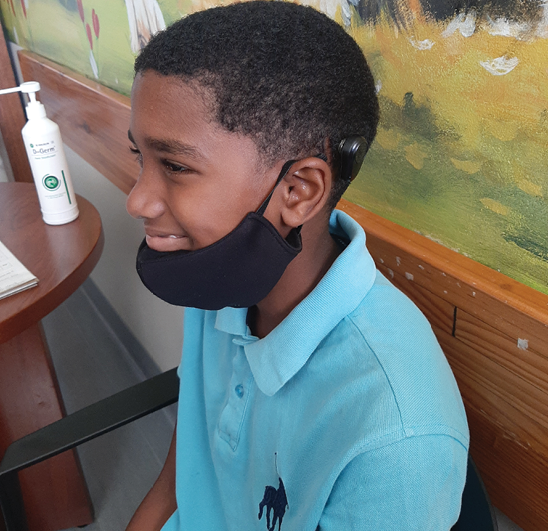Over 100 people are able to hear more easily and understand speech better, thanks to a life-changing bone conduction implant programme.
The programme, run by Groote Schuur Hospital (GSH) and Red Cross War Memorial Children’s Hospital (RCWMCH), celebrates a decade of patient-centred care this year.
“Eleven years ago, bone conductive hearing aids were no longer being manufactured so we started the bone conduction implant programme. We came up with the bone conductive device as part of the programme,” says GSH Dr Estie Meyer, who leads the programme.
A bone conduction processor can be used when you cannot wear a normal hearing aid. “For instance, if you do not have an ear canal, if you have chronic active leaking ears or if you have a big conductive hearing loss,” Dr Meyer explains.
Silva Kuschke, the Chief Audiologist at RCWMCH, says hearing loss is communication loss. “Assistive devices like these help children with conductive and mixed hearing losses to overcome barriers to communication so that they can enjoy
being children. Every child has the right to express themselves, have access to sound and learn.”
Garrison Thomas (12), one of the children in the programme, has a long history of middle ear disease and subsequent moderate conductive hearing loss. He was fitted with a bone conduction processor on a softband in May 2016 and received his implant in June 2016.
“The processor has made my life much easier in the classroom, as I am able to hear my teacher better and don’t get as tired. Thanks to the programme, I can now just get on with my work,” he says.
“It fills us with wonder every time we see a child with conductive hearing loss literally light up like a thousand stars when we switch on their bone conduction device,” says Kuschke.
The hospitals accept referrals from across the Western Cape and also help foreign national patients from neighbouring sub-Saharan African countries.
Patients are referred to audiology departments at the hospitals, where a hearing aid evaluation is done to determine bone conduction device candidacy.
While implants can be done at the age of five, in low- to mid-income countries like South Africa, theatre time is limited and budget constrains are a reality. “We therefore implant most children at the age of eight, in a single-stage surgery,” says Dr Meyer.



 Facebook
Facebook Twitter
Twitter WhatsApp
WhatsApp